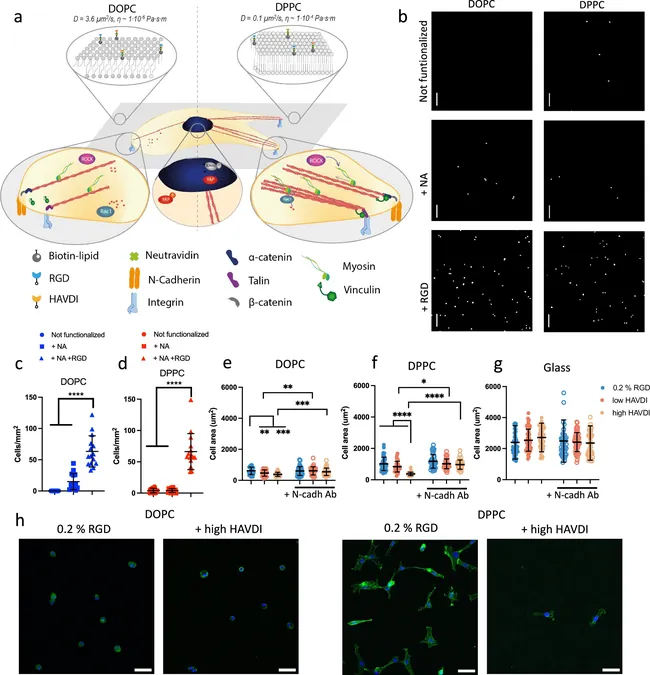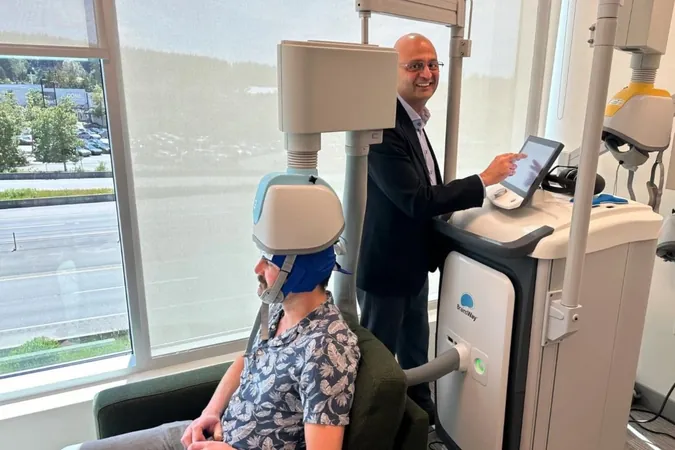
Revolutionizing Regenerative Medicine: How the Viscosity of Biomaterials Can Transform Stem Cell Fate
2024-11-18
Author: Emily
Introduction
Recent groundbreaking research led by the Institute for Bioengineering of Catalonia (IBEC) has uncovered a vital link between the viscosity of biomaterials and the differentiation of mesenchymal stem cells (MSCs). This pioneering study, spearheaded by Manuel Salmeron, an ICREA Research Professor at IBEC and a Biomedical Engineering Professor at the University of Glasgow, sheds light on the critical role that the physical properties of environments play in stem cell behavior.
Key Findings
Published in the prestigious journal *Nature Communications*, the findings indicate that the viscosity—essentially the "thickness" or fluidity—of the materials surrounding stem cells significantly influences their transformation into various tissue types, such as bone, cartilage, or muscle. Historically, much of the research on tissue engineering has focused on the stiffness of materials, often neglecting how viscosity can shape biological outcomes.
Viscoelasticity in Tissues
Salmeron elaborated on this, stating, "Typically, we model tissues as springs requiring a consistent force to remain deformed. However, tissues are more accurately described as viscoelastic. When a force is exerted, they deform, but they do not require an ongoing force to maintain this deformation due to their unique internal structural changes."
Innovative Research Approaches
Essentially, this research has shifted the narrative from merely assessing material stiffness to embracing the complexities of viscosity. The research team utilized an innovative experimental setup featuring lipid membranes that emulate the viscous characteristics of natural tissues. This model provided new insights into how adhesion proteins (integrins) and cell-joining proteins (cadherins) influence the behavior of MSCs in varying environments.
Impact on Stem Cell Behavior
One fascinating discovery revealed that when MSCs are surrounded by other cells, their adhesion to surfaces decreases. This change triggers a shift in behavior, guiding the cells toward differentiation into less rigid tissues like cartilage. Therefore, both the viscosity of the extracellular matrix and the interactions between cells play paramount roles in how stem cells react to their environment.
Collaborative Efforts
Moreover, collaborating with Pere Roca-Cusachs and his team from the University of Barcelona, researchers adapted their model to integrate viscosity and cell-cell interactions. This advanced model presents a more accurate simulation of how viscoelastic tissues behave within the human body, ushering in a new era in biomaterial design.
Implications for Regenerative Medicine
The study represents not only a significant contribution to the academic landscape but also marks a crucial milestone in the pursuit of developing biomaterials that can better guide tissue regeneration. As the global focus shifts towards personalized medicine, understanding the subtleties of material properties, like viscosity, could lead to more effective and tailored therapeutic options.
Conclusion
As we continue to navigate the intricacies of stem cell biology, this research signals a transformative step forward in regenerative medicine, possibly revolutionizing how we approach tissue engineering and patient care in the future. Could these insights lead to bespoke therapies that harness the natural healing properties of the body more effectively? Only time will tell!









 Brasil (PT)
Brasil (PT)
 Canada (EN)
Canada (EN)
 Chile (ES)
Chile (ES)
 España (ES)
España (ES)
 France (FR)
France (FR)
 Hong Kong (EN)
Hong Kong (EN)
 Italia (IT)
Italia (IT)
 日本 (JA)
日本 (JA)
 Magyarország (HU)
Magyarország (HU)
 Norge (NO)
Norge (NO)
 Polska (PL)
Polska (PL)
 Schweiz (DE)
Schweiz (DE)
 Singapore (EN)
Singapore (EN)
 Sverige (SV)
Sverige (SV)
 Suomi (FI)
Suomi (FI)
 Türkiye (TR)
Türkiye (TR)